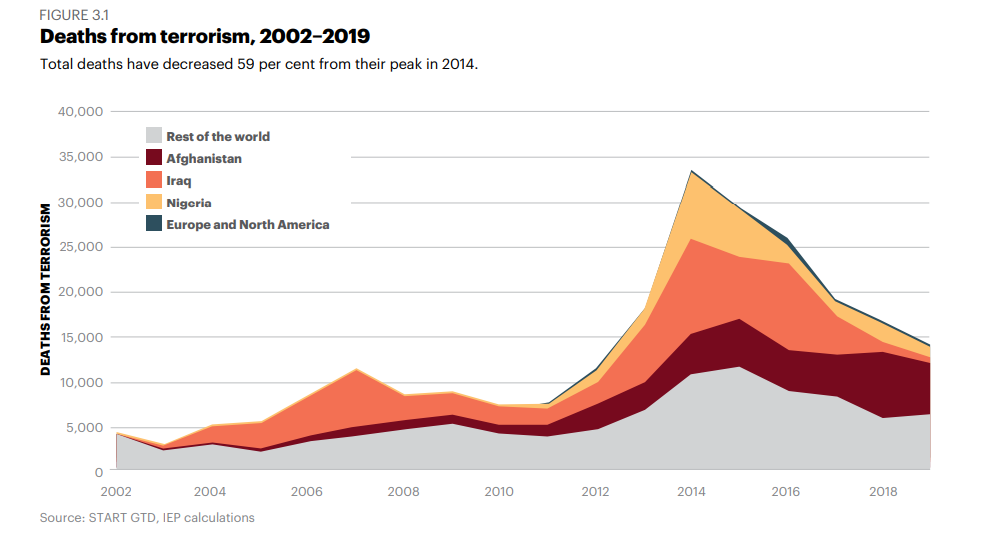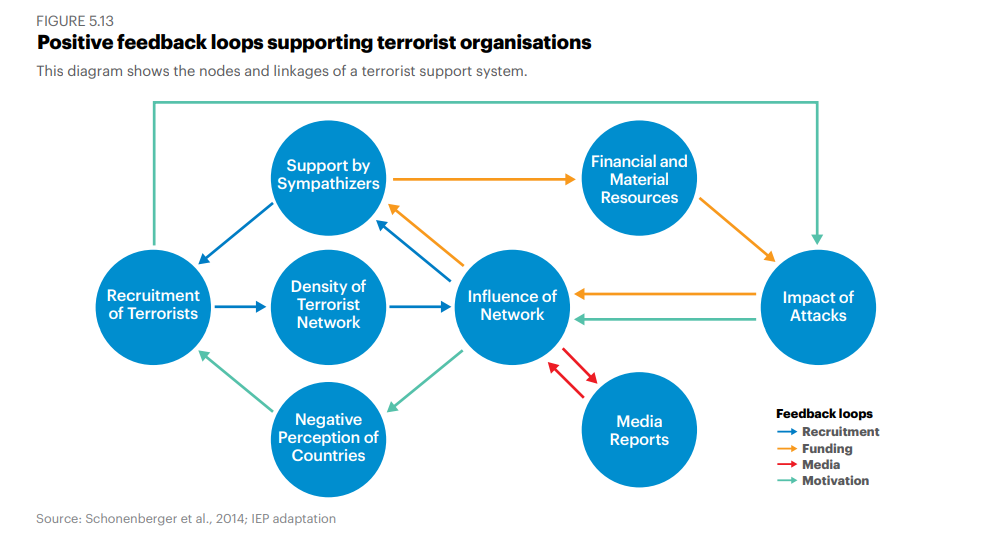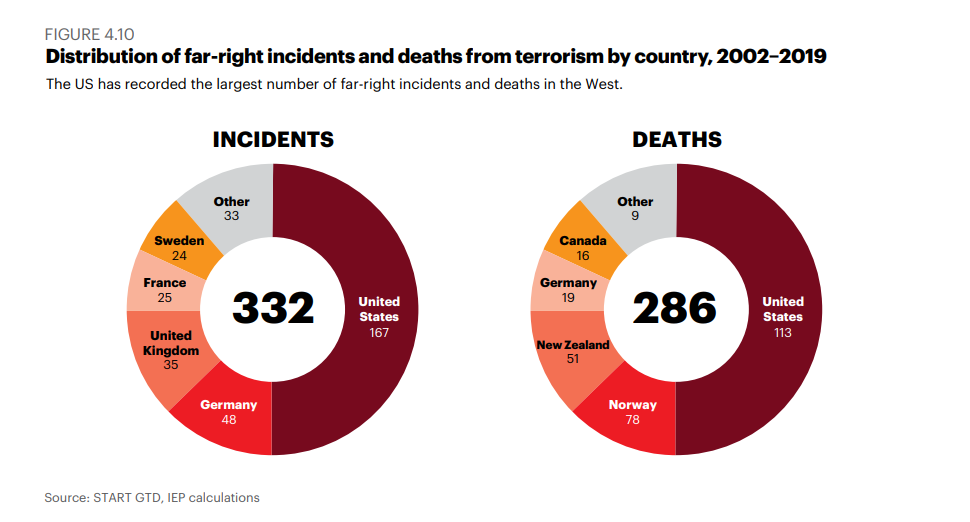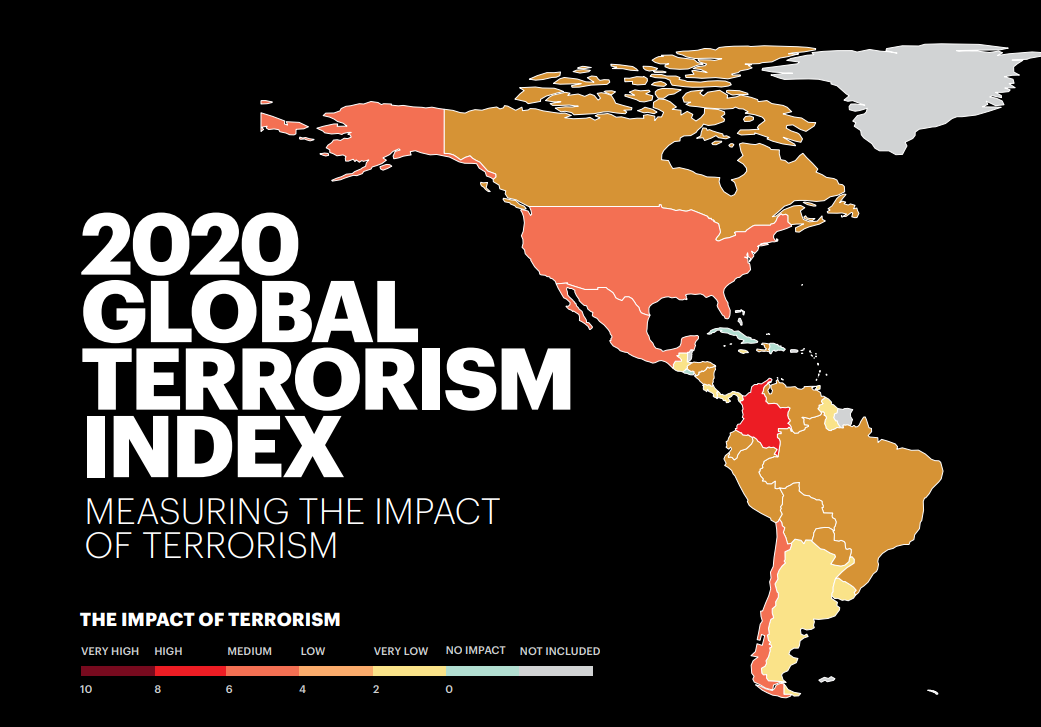The 2020 Global Terrorism Index (GTI) shows that the total number of deaths from terrorism declined for the fifth consecutive year, from 33,438 people killed in 2014 to 13,826 in 2019. The GTI, an annual report published today by the Institute for Economics and Peace (IEP), outlines data trends of global terror tendencies.
Decrease of Terrorism in the Middle East
The Middle East and North Africa (MENA), Eurasia, South America and South Asia regions all recorded falls in deaths from terrorism of at least 20 per cent. The primary cause of this reduction in the number of deaths from terrorist activity has been a decrease of conflict intensity in the Middle East, and the decline of ISIL in Iraq and Syria.

Afghanistan remains the country with the highest terrorism-related death rate. However, deaths there have been declining steadily since 2018, following territory loss by the Khorasan Chapter of the Islamic State.
Although the overall impact of terrorist activity continues to decline, new threats continue to emerge. As levels fall in the Middle East and South Asia, new groups gain ground in other regions. The most prominent of these are ISIL affiliate groups in sub-Saharan Africa, and far-right terrorism in Western Europe and North America.
Related Articles: 2019 Global terrorism Index Report | The Effect of Anti-Terrorist Laws Passed After 9-11
There has been substantial improvement in the number of countries experiencing terrorism. In the previous report, the number of countries experiencing at least one death from terrorist activity was 72, but since then, that number has decreased to 63. Algeria, Paraguay and Peru recorded no deaths for the first time since at least 2011.
The most notable change in recent years is the decline of the Islamic State of Iraq and the Levant (ISIL). At the height of its power, ISIL saw unprecedented numbers of foreign affiliates travel to Iraq and Syria to fight or live under its rule. ISIL’s rapid expansion across Iraq and Syria prompted an international response, causing it to steadily weaken since 2015. The response focused on disrupting the feedback loops of propaganda and recruitment that allow terrorist organizations to grow.

While ISIL has been severely weakened, it has not been eliminated. Instead, ISIL’s global provinces and affiliates have become increasingly deadly, indicating the strength of ISIL’s brand outside of Iraq and Syria. The question of internet misinformation will prove to be critical in the fight against terror moving forward. The internet is a major propaganda tool for terrorism, and “nearly 50 per cent of current or former members of ISIL indicate they had been radicalised solely by passively consuming the material on social media.”
Far-Right Extremism
The second emerging trend in terrorist activity following the decline of ISIL in the Middle East has been the rise of far-right terrorism in the West, amidst the rise of populism, civil unrest, and political violence more generally. In March of last year in New Zealand, a lone gunman attacked two mosques in Christchurch, killing 51 people and injuring 49. The rise in far-right attacks has led to intense debate on the nature and extent of this threat, with a particular focus on whether far-right terrorism is now a greater threat in the West than radical Jihadist terrorism.

Early reports into 2020 appear to continue the downward trend of terror-related deaths. However, the COVID-19 pandemic is likely to present new and distinct challenges for counter-terrorism efforts. In particular, the government deficits caused by increased public spending during the pandemic will likely have a negative impact on counterterrorism budgets. The report remains optimistic, but like every other way that the pandemic has affected the world, it leaves the future of counter-terrorism uncertain.
Editor’s Note: The opinions expressed here by Impakter.com columnists are their own, not those of Impakter.com.










